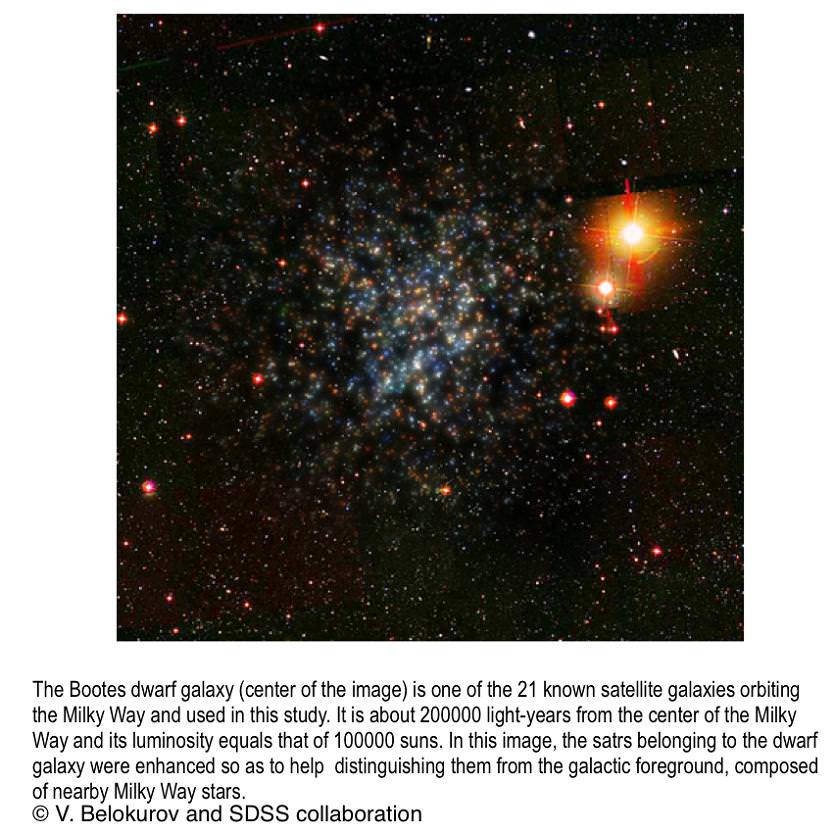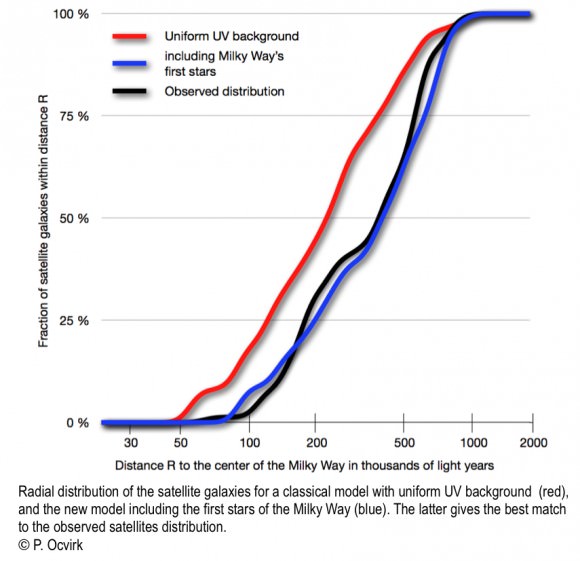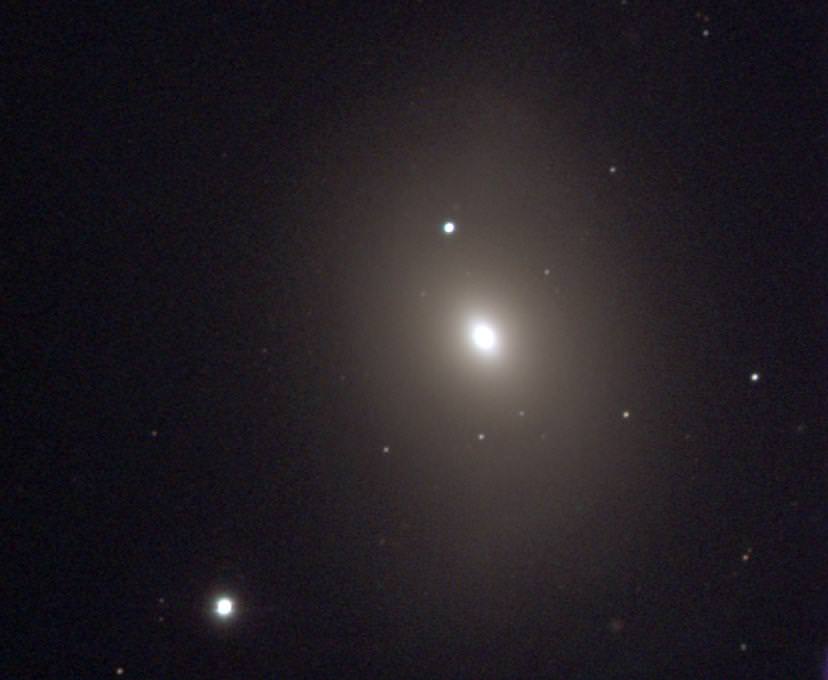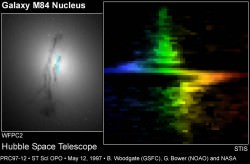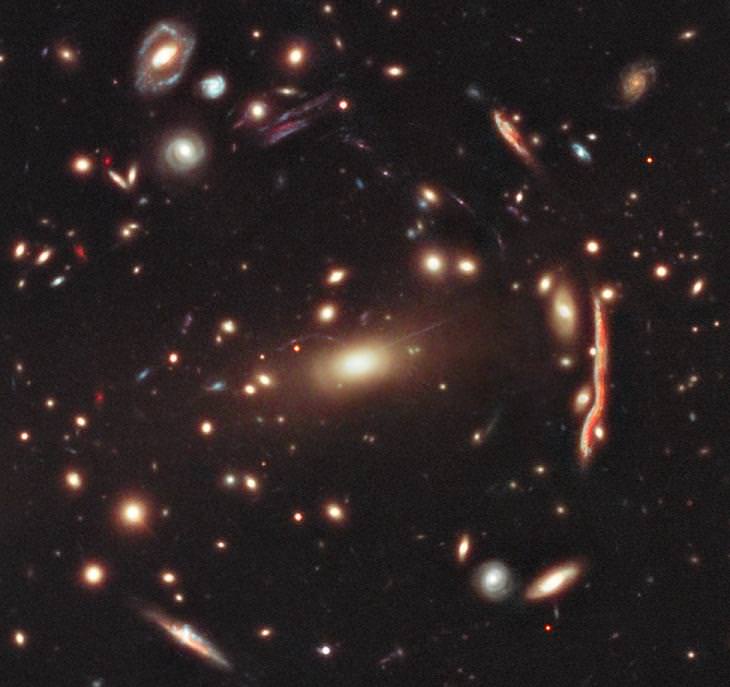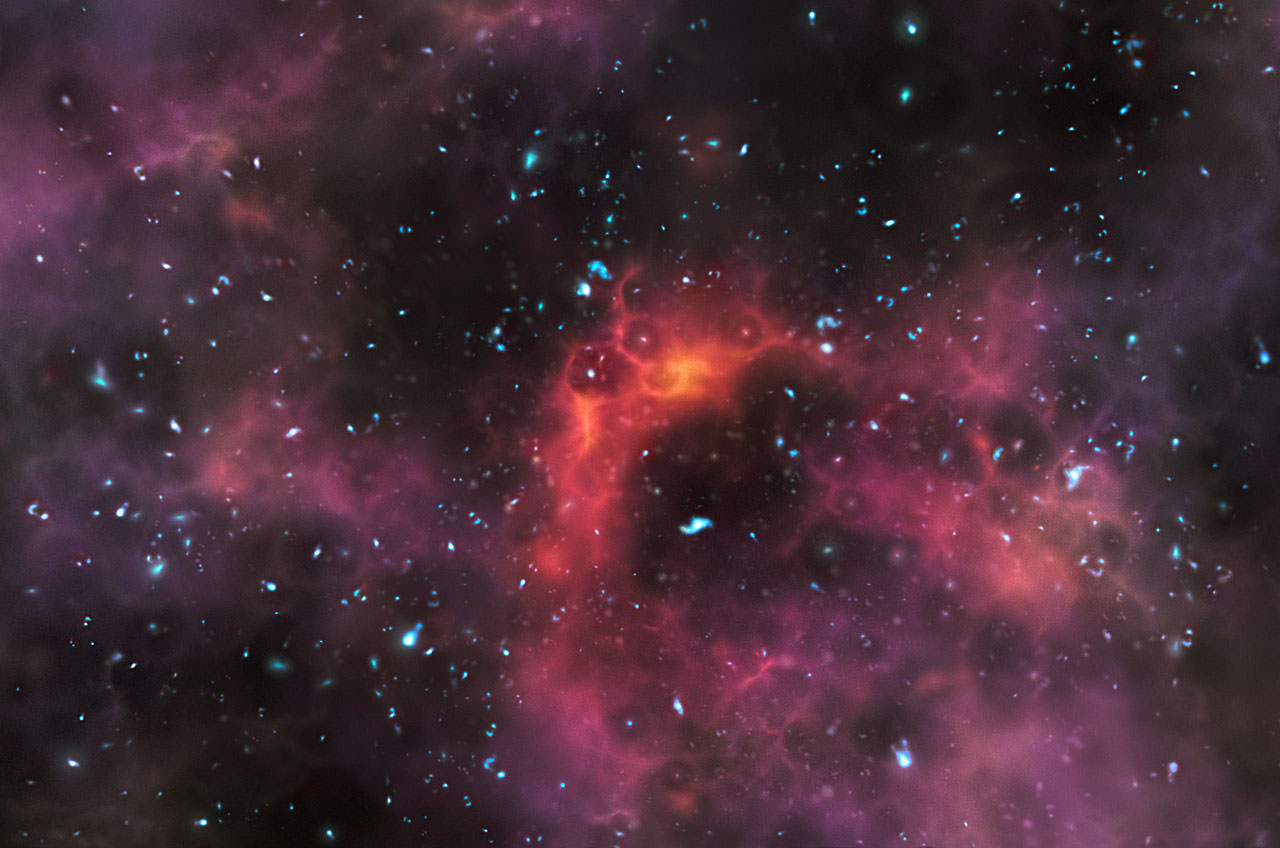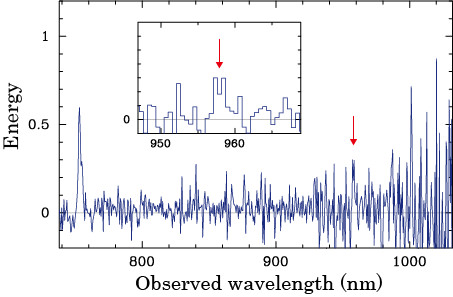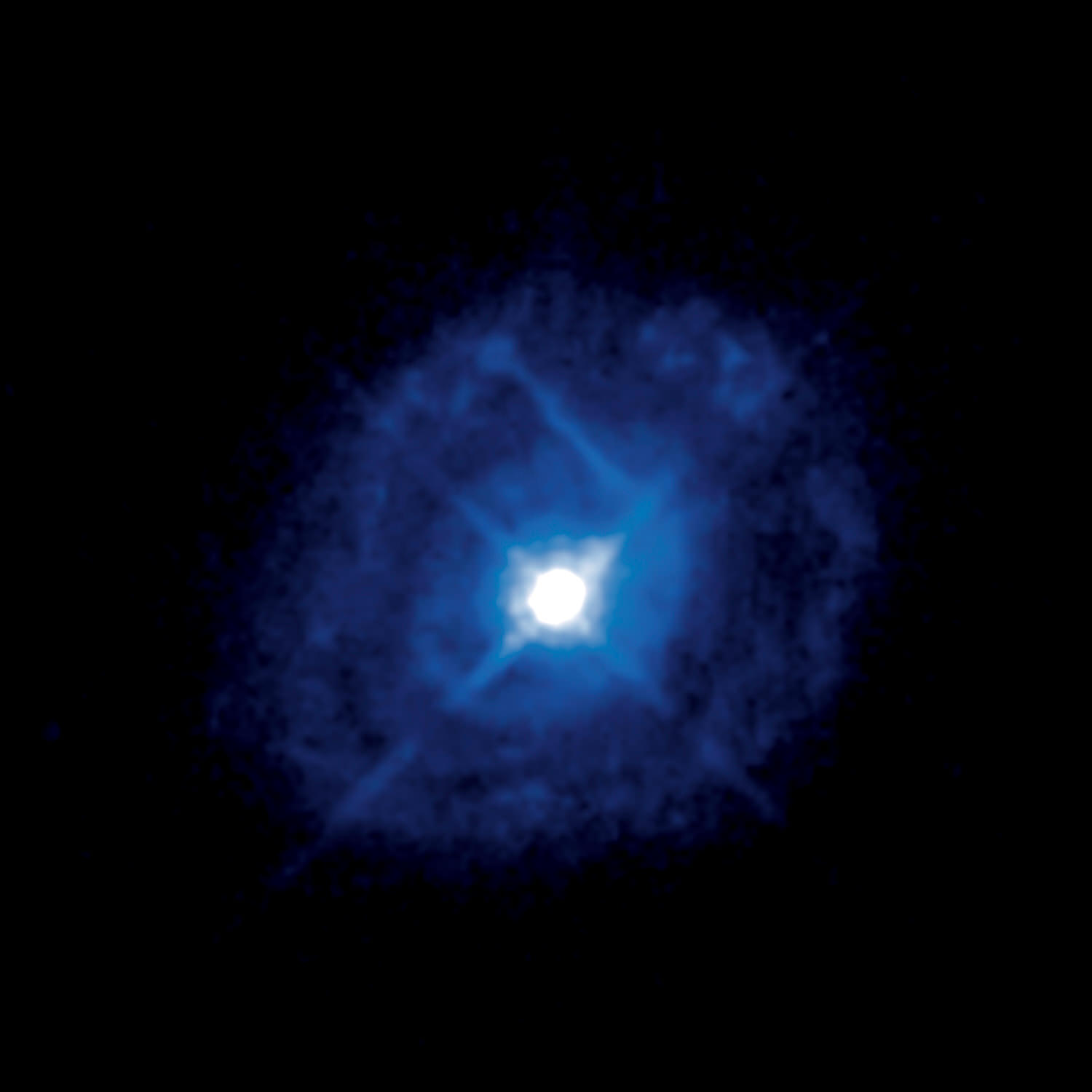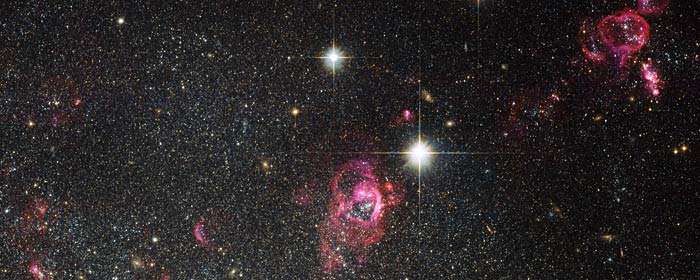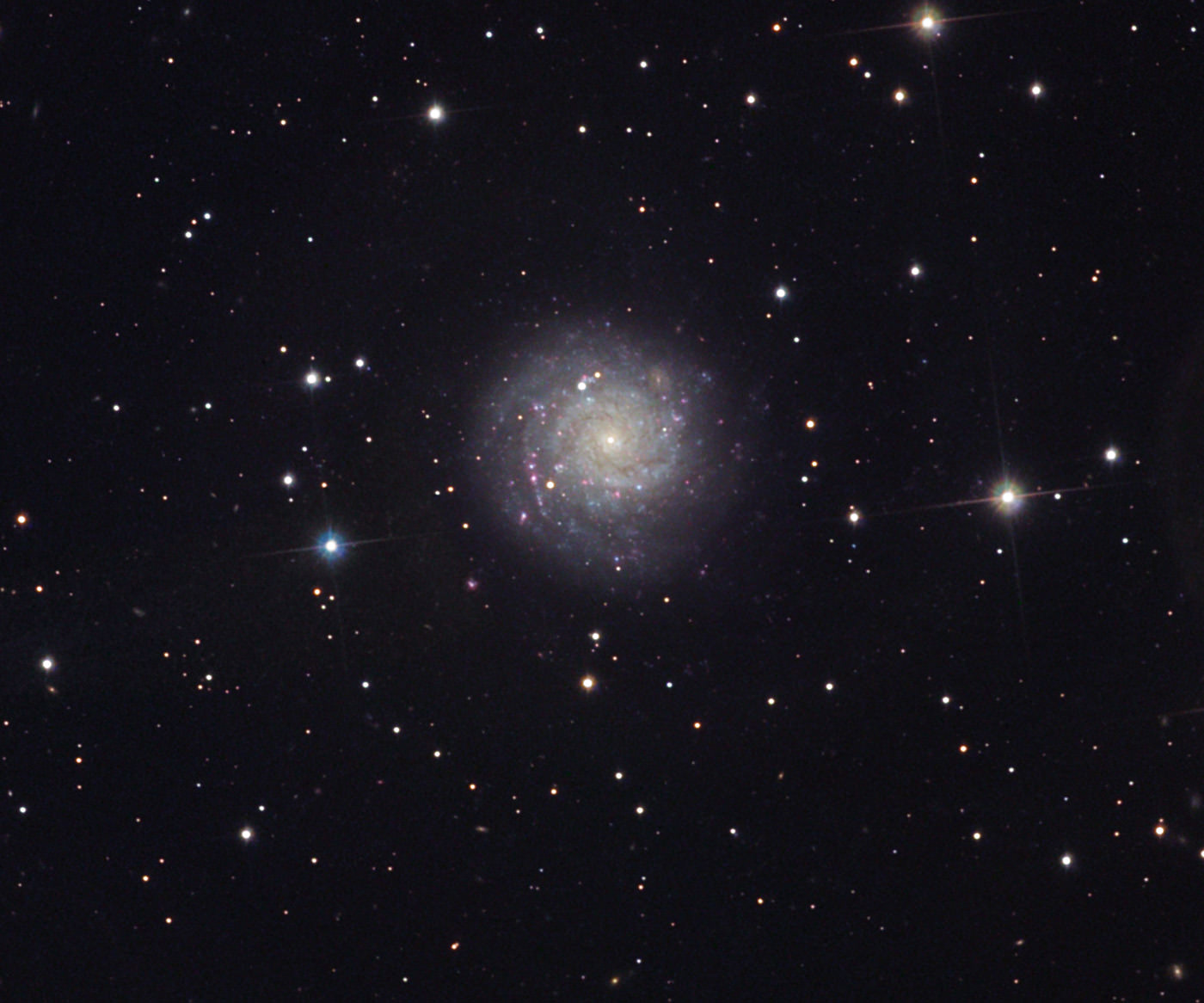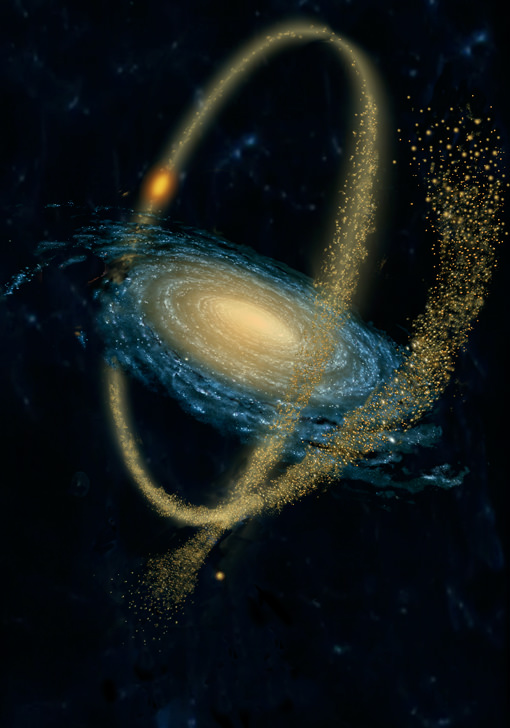[/caption]
The ground-breaking discovery of a new class of galaxies, Green Peas, in 2009 by a group of Galaxy Zoo volunteers – have recently been followed up by further observations in the radio spectrum.
The Green Peas were first identified from Sloane Digital Sky Survey data – and then in Hubble Space Telescope archive images. Now radio observations of Green Pea galaxies (from GMRT and VLA) have led to some new speculation on the role of magnetic fields in early galaxy formation.
Green Pea galaxies were so named from their appearance as small green blobs in Galaxy Zoo images. They are low mass galaxies, with low metallicity and high star formation rates – but, surprisingly, are not all that far away. This is surprising given that their low metallicity means they are young – and being not very far away means they formed fairly recently (in universal timeframe terms).
Most nearby galaxies reflect the 13.7 billion year old age of the universe and have high metallicity resulting from generations of stars building elements heavier than hydrogen and helium through fusion reactions.
But Green Peas do seem to have formed from largely unsullied clouds of hydrogen and helium that have somehow remained unsullied for much of the universe’s lifetime. And so, Green Peas may represent a close analogue of what the universe’s first galaxies were like.
Their green color comes from strong OIII (ionised oxygen) emission lines (a common consequence of lots of new star formation) within a redshift (z) range around 0.2. A redshift of 0.2 means we see these galaxies as they were when the universe was about 2.4 billion years younger (according to Ned Wright’s cosmology calculator). Equivalent early universe galaxies are most luminous in ultraviolet at a redshift (z) between 2 and 5 – when the universe was between 10 and 12 billion years younger than today.

Anyhow, studying Green Peas in radio has yielded some interesting new features of these galaxies.
With the notable exception of Seyfert galaxies, where the radio output is dominated by emission from supermassive black holes, the bulk radio emission from most galaxies is a result of new star formation, as well as synchrotron radiation arising from magnetic fields within the galaxy.
Based on a number of assumptions, Chakraborti et al are confident they have discovered that Green Peas have relatively powerful magnetic fields. This is surprising given their youth and smaller size – with magnetic field strengths of around 30 microGauss, compared with the Milky Way’s approximately 5 microGauss.
They do not offer a model to explain the development of Green Pea magnetic fields, beyond suggesting that turbulence is a likely underlying factor. Nonetheless, they do suggest that the strong magnetic fields of Green Peas may explain their unusually high rate of star formation – and that this finding suggests that the same processes existed in some of the first galaxies to appear in our 13.7 billion year old universe.
Further reading:
Chakraborti et al Radio Detection of Green Peas: Implications for Magnetic Fields in Young Galaxies
Cardamone et al Galaxy Zoo Green Peas: Discovery of A Class of Compact Extremely Star-Forming Galaxies.


